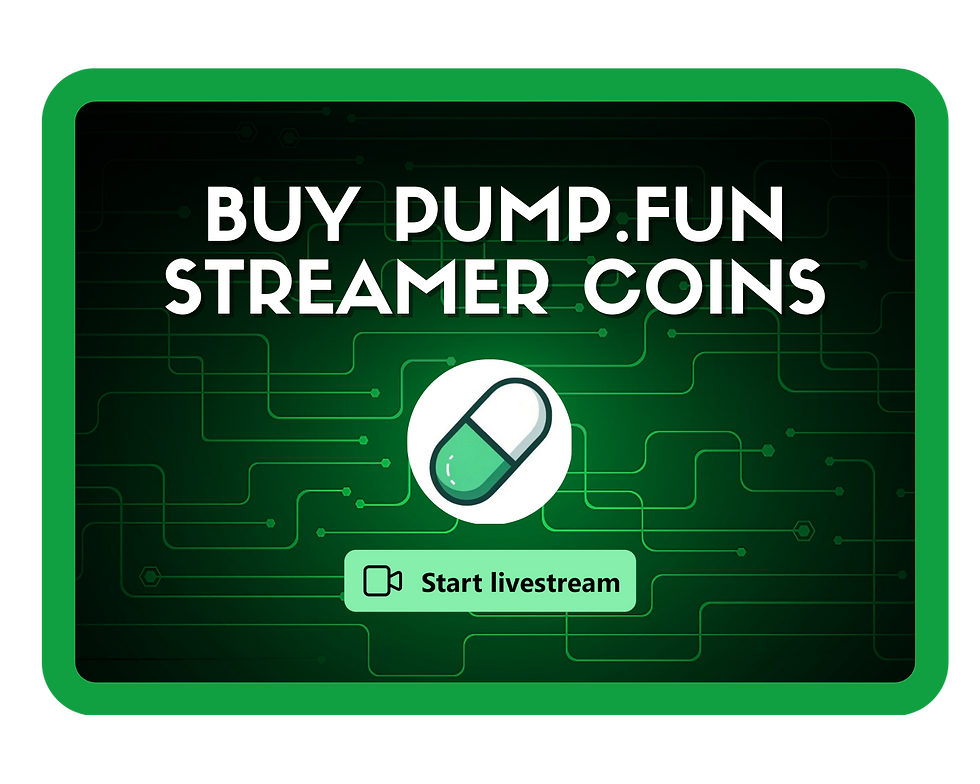Is Your Meme Coin a Scam? 7 Warning Signs to Look For
- DEXROCKETS

- Jan 9
- 4 min read
Updated: Feb 17
The rise of meme coins has taken the crypto world by storm. From Dogecoin's meteoric rise to PNUT massive community backing, meme coins have created wealth for some and heartbreak for many. But with high rewards often come high risks, especially when scams lurk in the shadows of viral trends.
If you’re considering investing in a meme coin, you must exercise caution. Here are 7 warning signs that can help you determine whether a meme coin is a scams.

1. Lack of Transparency
Transparency is critical in any legitimate crypto project. If a meme coin’s team is anonymous or refuses to disclose its plans, this is a significant red flag.
What to Look For:
Team Information: Legitimate projects usually have a public team with verifiable backgrounds.
Whitepaper or Roadmap: A clear, detailed plan outlining the coin's purpose and future developments.
Warning Sign:
If the coin lacks a proper website or offers vague, unsubstantiated claims, steer clear. Scammers often capitalize on hype while keeping their identities hidden.
2. No Real Use Case
Meme coins thrive on humor and virality, but they still need some form of utility to sustain long-term value. A coin without a clear purpose or application is likely to fizzle out.
What to Look For:
Ecosystem Integration: Is the coin part of a broader DeFi or NFT project?
Community Value: Does the coin have practical uses, such as staking, governance, or payments?
Warning Sign:
Beware of coins that rely solely on memes or marketing gimmicks without delivering any tangible benefits.

3. Unrealistic Promises
“Invest now and 100x your money!” Sound familiar? Scam projects often lure investors with exaggerated claims of massive returns.
What to Look For:
Balanced Messaging: Legitimate projects discuss risks and rewards, not just moonshot gains.
Caution Around Guarantees: Crypto markets are volatile, and no one can guarantee profits.
Warning Sign:
If the project’s marketing focuses entirely on “getting rich quick,” it’s probably too good to be true.
4. Poor Tokenomics
Tokenomics refers to the distribution, supply, and demand mechanics of a cryptocurrency. Scammers often design tokenomics to favor themselves while dumping on unsuspecting investors.
What to Look For:
Allocation Transparency: Are most tokens locked in smart contracts or held by a small group?
Circulating Supply: Projects with an unlimited supply can lead to hyperinflation.
Warning Sign:
If insiders hold a disproportionate amount of tokens or if there’s no token burn mechanism, the project could be a pump-and-dump scheme.

5. Low Liquidity
Liquidity ensures that investors can buy or sell tokens without causing drastic price changes. Scam coins often have little to no liquidity, making it impossible to cash out without significant losses.
What to Look For:
Liquidity Pools: Established coins have robust liquidity on platforms like Uniswap or PancakeSwap.
Daily Volume: Check for consistent trading activity.
Warning Sign:
Low trading volume and small liquidity pools are red flags. If the project lacks liquidity, even minor sell-offs can crash the token price.
6. Aggressive Marketing with No Substance
Scammers are masters at creating buzz around their projects through aggressive marketing tactics. While hype can attract attention, it’s meaningless without substance.
What to Look For:
Organic Growth: Does the community genuinely support the project, or is it full of bots and paid shills?
Meaningful Updates: Legitimate projects regularly share progress on development milestones.
Warning Sign:
If a project spends more time on flashy advertising and giveaways than on real developments, it’s worth questioning their intentions.
7. Rug Pull Potential
A rug pull occurs when developers abandon a project after cashing out their holdings, leaving investors with worthless tokens. This scam has become alarmingly common in the meme coin space.
What to Look For:
Locked Liquidity: Ensure that liquidity is locked in a smart contract to prevent sudden withdrawals.
Contract Audit: Verify that the smart contract has been audited for vulnerabilities.
Warning Sign:
If liquidity isn’t locked or the contract lacks an audit, the chances of a rug pull are high.
How to Protect Yourself from Meme Coin Scams
Investing in crypto comes with inherent risks, but you can reduce your chances of falling victim to a scam by following these tips:
Do Your Research (DYOR): Always investigate a project thoroughly before investing.
Verify Community Sentiment: Engage with the community on Telegram, Discord, or Twitter to gauge its authenticity.
Analyze Contract Details: Use platforms like Etherscan or BscScan to review token distribution and contract codes.
Start Small: Don’t invest more than you can afford to lose, especially in high-risk projects.
Consult Trusted Sources: Follow reputable crypto analysts and platforms for insights.

Real-Life Signs of Meme Coin Scams
Case Study: Squid Game Token (SQUID)
The Squid Game token capitalized on the popularity of the Netflix series but turned out to be a rug pull. Developers walked away with millions, leaving investors unable to sell their tokens.
Lesson Learned:
Examine the legitimacy of a project’s associations. The Squid Game token had no official ties to the show, yet many investors ignored this crucial detail.
Conclusion: Invest Wisely
Meme coins can be lucrative but are also rife with scams. By staying vigilant and recognizing these 7 warning signs, you can protect yourself from losing money to fraudulent projects, of meme coin scams. Always prioritize due diligence over FOMO (fear of missing out).
When in doubt, remember that in the crypto world, if something seems too good to be true, it probably is.
.png)



Comments